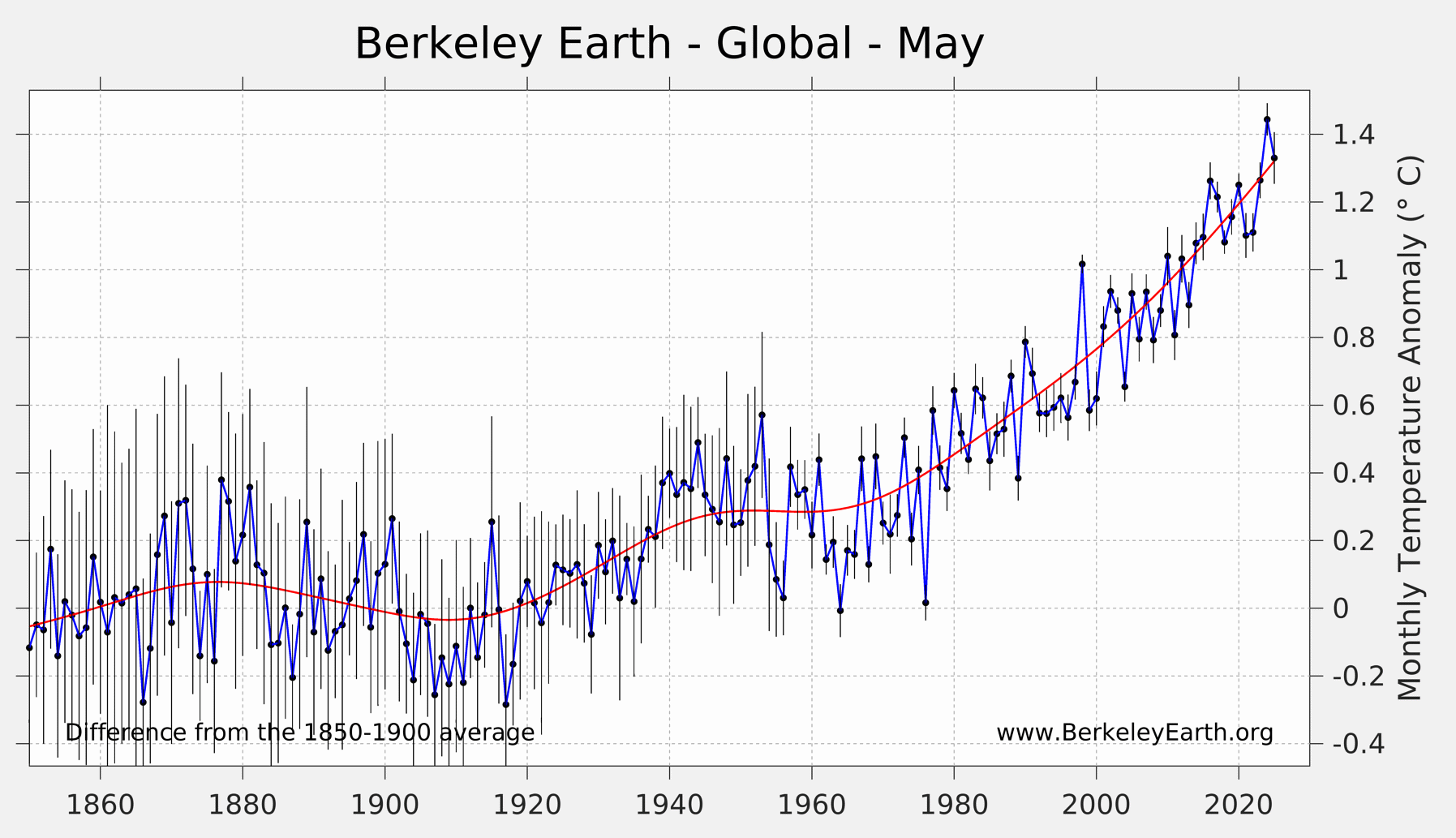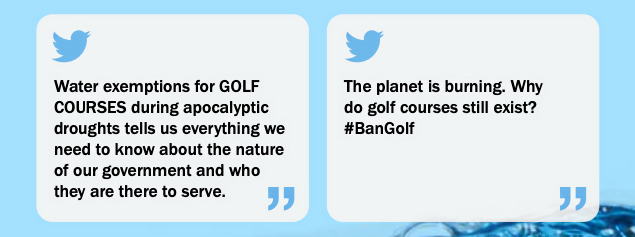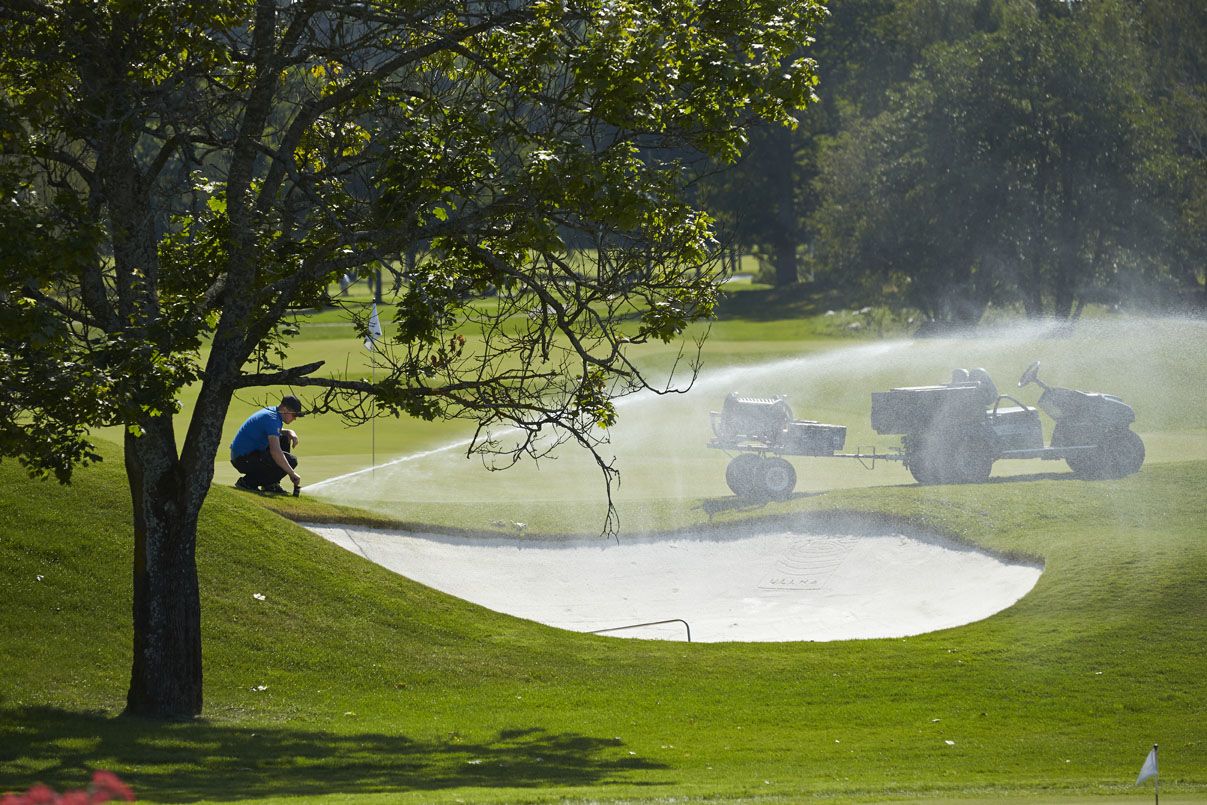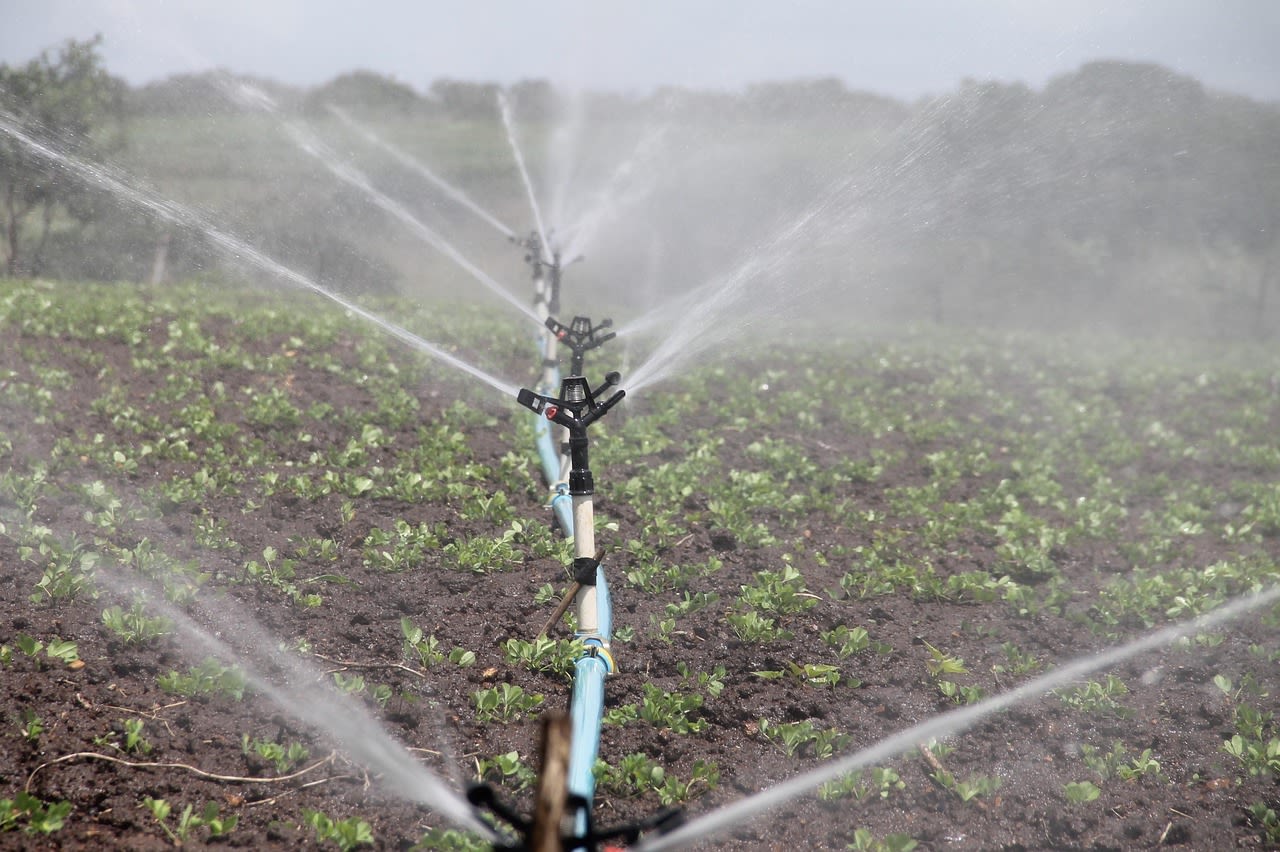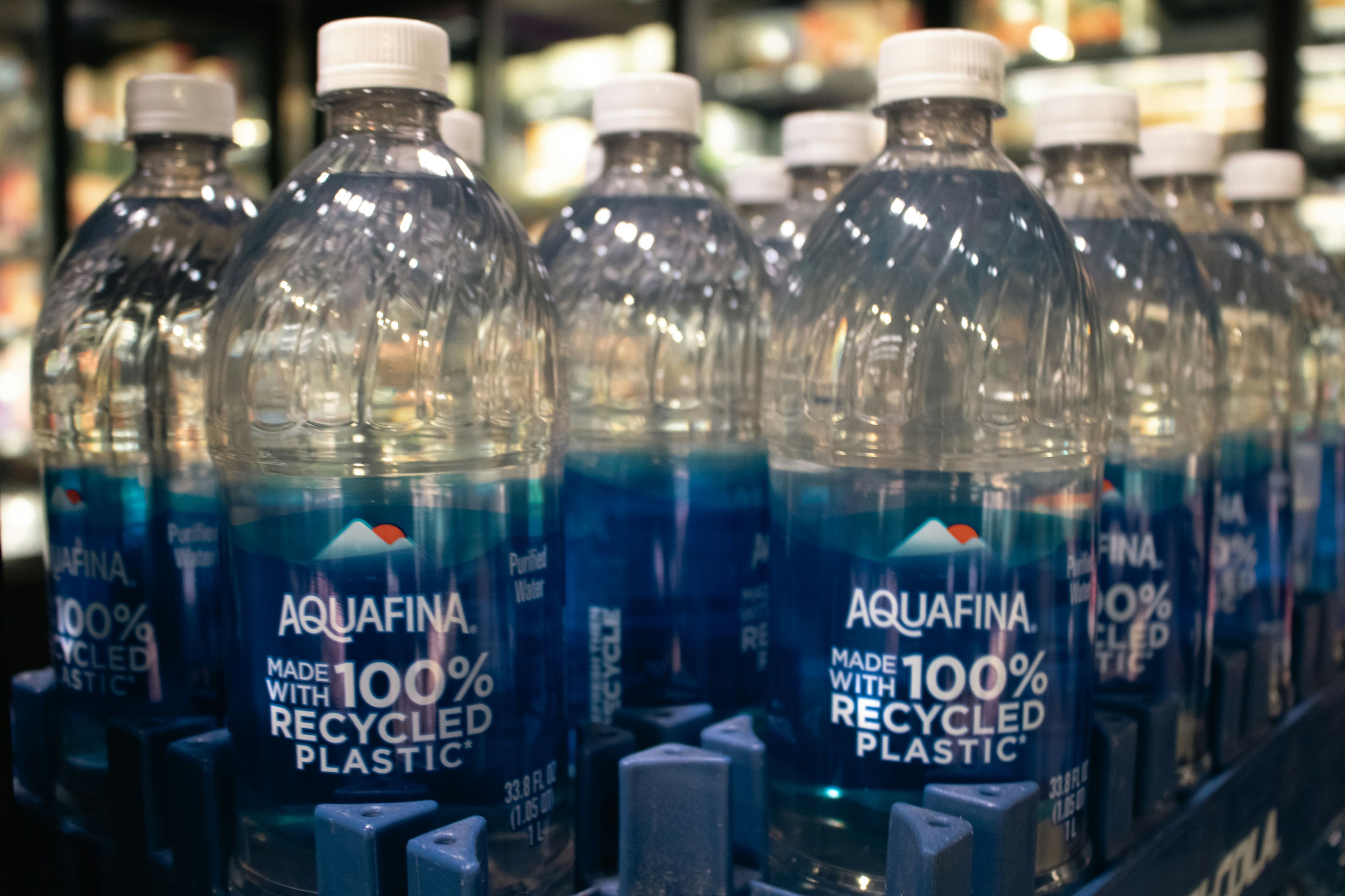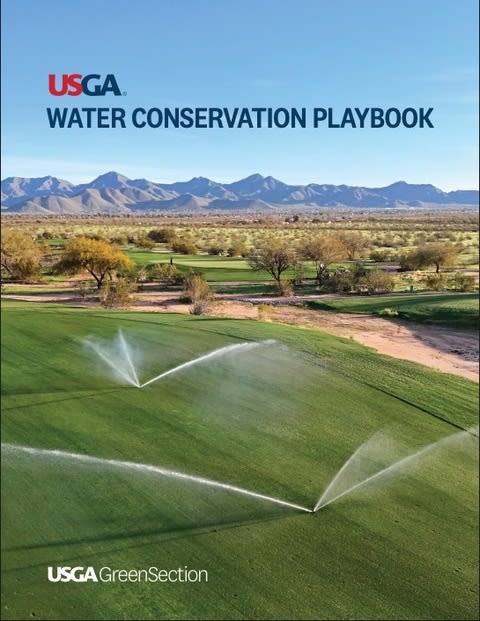How Golf Can Become Water Sustainable
By Syngenta Golf
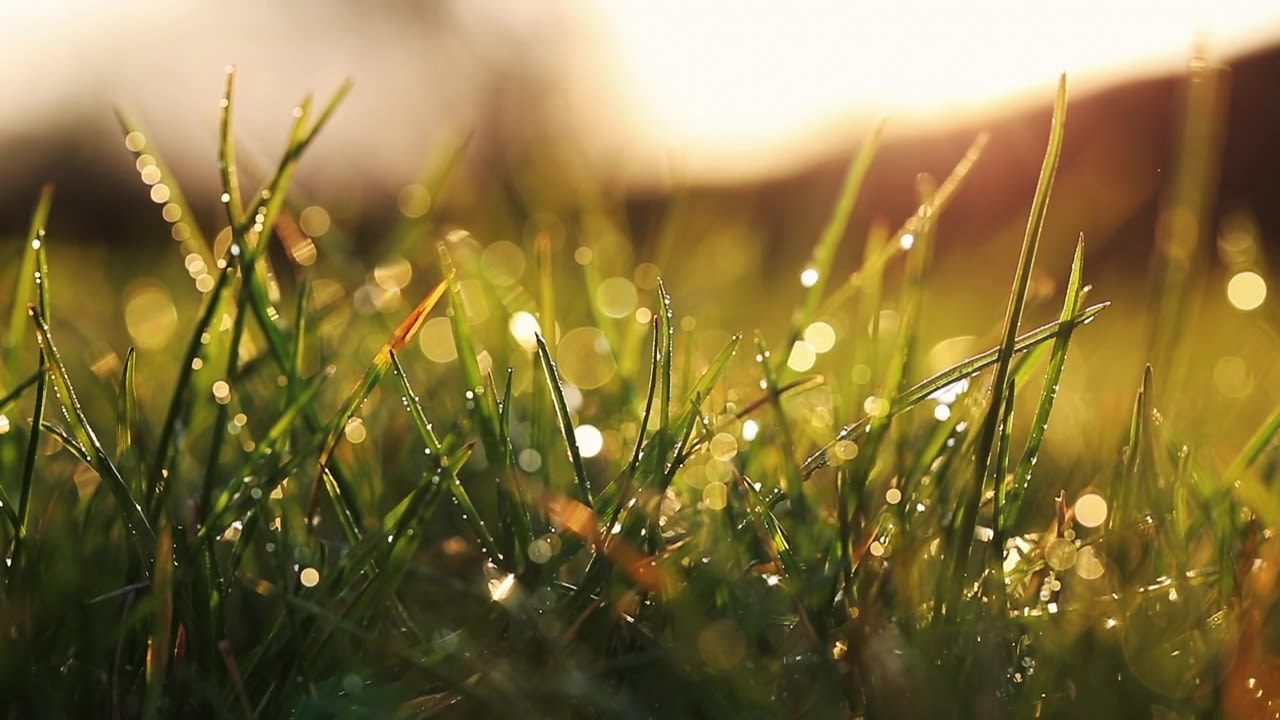
It was the American scientist and statesman Benjamin Franklin who said, "When the well is dry, we know the worth of water."
You don’t need to remind agronomists, golf course superintendents and greenkeepers of this adage - with every year, climate change brings ever greater challenges.
This year (2025) is predicted to be one of the three warmest on record, continuing an extraordinary three-year run. [1] In many parts of the world, it’s putting a strain on the availability of water for irrigation.
Berkeley Earth, May 2025 Temperature Update: https://berkeleyearth.org/may-2025-temperature-update/
Berkeley Earth, May 2025 Temperature Update: https://berkeleyearth.org/may-2025-temperature-update/
Social media detractors accuse golf courses of ‘wasting water’ in debates devoid of fact, or which golf businesses are too afraid to engage.
Yet the evolving situation is that there is now an existential threat of water supplies being severely restricted or cut entirely in many regions.
Climate change and increased water scarcity pose a major challenge to the golf industry - and a threat to individual businesses. After all, customers want to play on turf, not dirt.
In the face of sceptical communities and local authorities, what can golf course businesses do to cut consumption, increase efficiency and demonstrate through data that their use of water is sustainable?
And compared to other industries, what environmental and economic benefits does golf bring to local communities, as part of the wider sustainability equation: people, planet and profit?
Syngenta Golf investigates…
[1] https://www.carbonbrief.org/state-of-the-climate-2025-close-behind-2024-as-the-hottest-start-to-a-year/#:~:text=The%20first%20three%20months%20of%202025%20have%20been%20unusually%20warm,shown%20in%20the%20figure%20below
Perception vs Reality
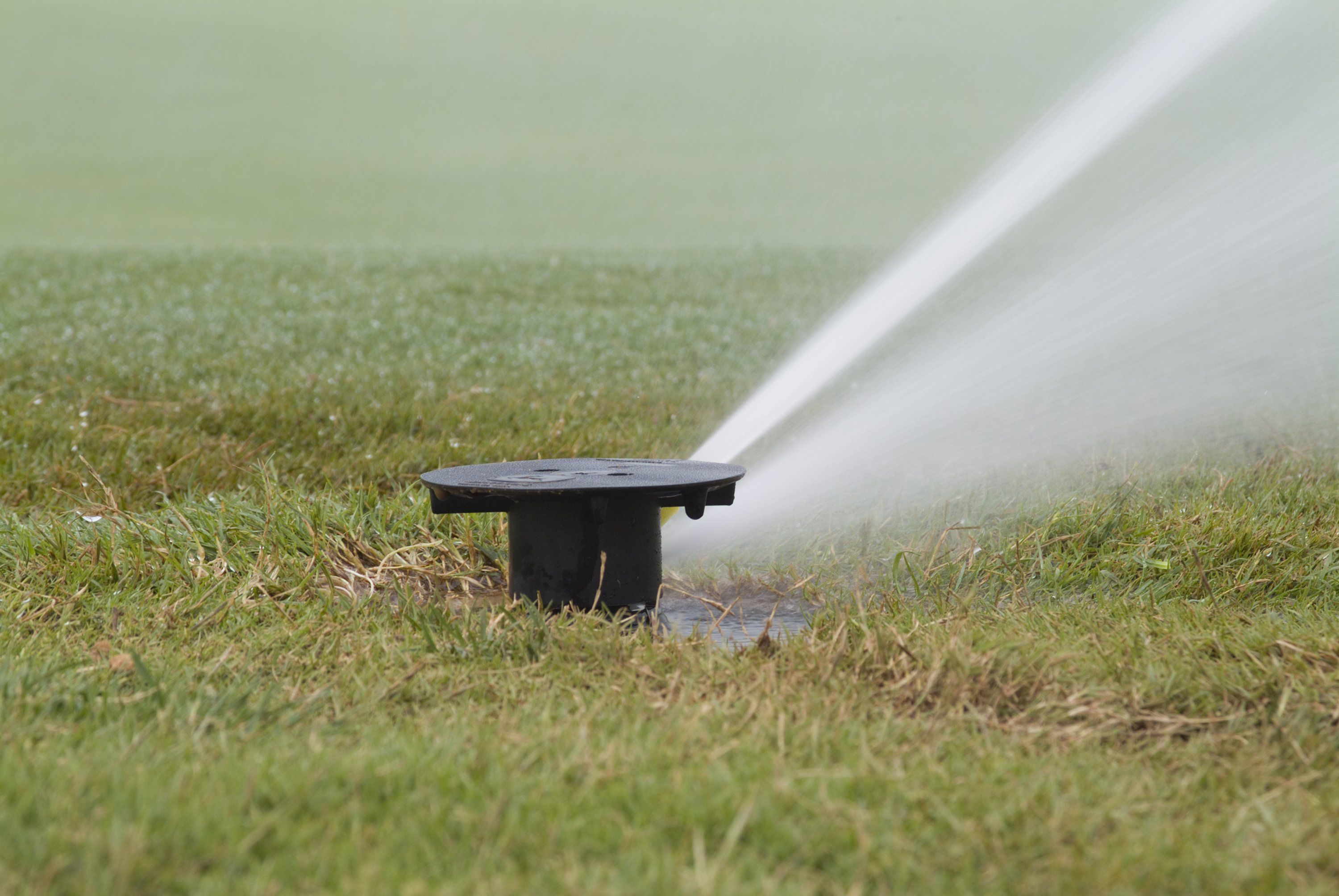
So what's the situation on the ground right now?
We know the wider perception of golf in relation to water is negative.
Syngenta’s own study, Golf & Social Media: Sustainability analyzing 16.1 million social media posts, comments, blogs and shares, found the sentiment towards golf, especially in relation to water was overwhelmingly negative.
During droughts, when detractors see the sprinklers switch on, social media channels light up.
One of the key issues is that misinformation underpins beliefs. And as we know, perception can quickly become reality on social media.
But the situation has also been caused in part by the golf industry and golf course businesses not communicating the facts and engaging with local communities.
Frequently, it’s the fear of attracting criticism that holds them back; other times, it’s simply not having the right information or knowing how to communicate.
The result is that golf course businesses today are typically on the backfoot when it comes to water sustainability.
When golf courses in Arizona were wrongly accused in a local newspaper article of wasting public water and exceeding their permits – a feature full of factual inaccuracies – detractors were already making wild guesses about how much water was being used on golf courses. Some thought it was 30% of the state’s water, others guessed 60%.
The reality is 2%. And as the Arizona Alliance for Golf was forced to point out in a reactive PR campaign to quell the media storm (even one national golf magazine piled in, reprinting the inaccurate story), much of the water is treated waste water from urban areas, recycled at a facility part paid-for by the golf courses themselves.
Putting itself on the front foot, the Alliance communicated a suite of key facts and messages to wrestle back control of the sustainability narrative, including:
- Golf in the state generates $6 billion of economic impact
- It creates 66,000 jobs, $2.3 billion in wages and $520 million in tax revenue
- It offers biodiverse habitats, and is good for the health and wellbeing of citizens
Rather than being on the outside, leaders from the golf industry in Arizona are now fully engaged in water policy discussions at state level.
Putting the facts and data in the public domain has helped inform debate and decisions. Golf now has a seat at the table when water sustainability is discussed.
So, if golf isn’t the user and abuser of water in a desert state that the public perceived, what’s the reality elsewhere?
Desert golf hole in Scottsdale, Arizona, United States, where only 2% of the state's water is used by golf courses
Desert golf hole in Scottsdale, Arizona, United States, where only 2% of the state's water is used by golf courses
Golf courses have an opportunity to communicate their true story and overcome misconceptions on water use
Golf courses have an opportunity to communicate their true story and overcome misconceptions on water use
Golf vs Other Industries
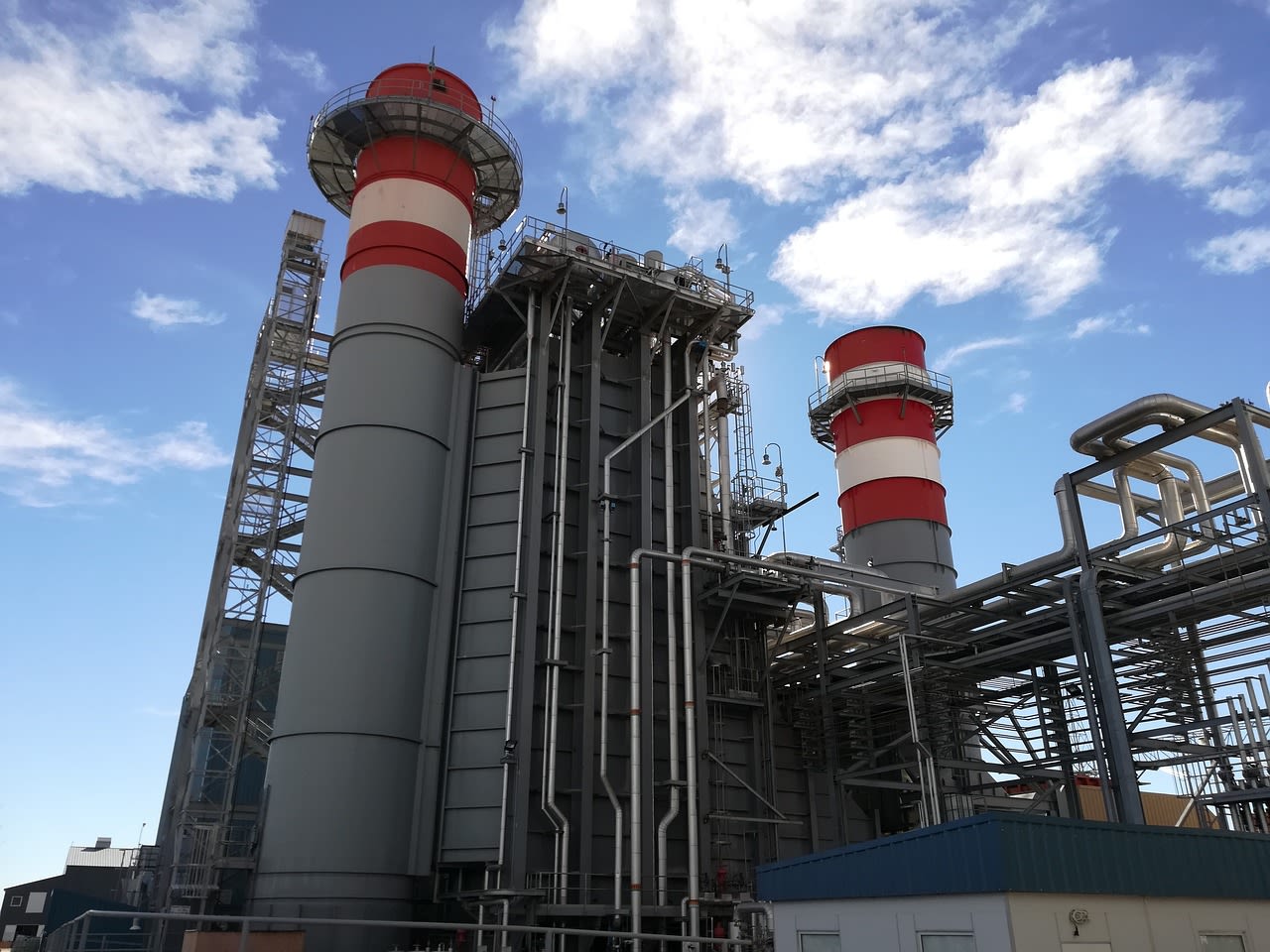
In Europe, agriculture accounted for 29% of total water abstraction from 2000 - 2022
In Europe, agriculture accounted for 29% of total water abstraction from 2000 - 2022
Every 10-50 GPT-3 responses can consume up to 500ml of water
Every 10-50 GPT-3 responses can consume up to 500ml of water
In the United States, golf courses account for just 1.3% of all the water drawn for irrigation, according to the USGA.
What’s more, the amount used by golf courses is falling - 30% since 2005 - due to improved irrigation practices.
How does this compare to other industries?
In Europe, the world’s fastest-warming continent where 30% of the land area experiences seasonal water scarcity each year*, the figures for water abstraction are revealing:
Electricity / Power Plant Cooling: 36%
Agriculture: 29%
Public Water (including tourism): 19%
Industry: 14%
Others (including mining, quarrying and construction): 2%
There are regional variations, naturally. Agriculture in southern Europe is the largest consumer of water, while electricity / power plant cooling is the largest user in central Europe.
‘Power plant cooling’ requires unpacking because it conceals an unseen story: the thirsty work of artificial intelligence (AI).
Thermoelectric power plants, which supply a substantial portion of the electricity used by data centres, require gargantuan volumes of water for cooling.
While the AI industry is remaining quiet on its water footprint, demand for AI is driving huge increases in consumption - or, to put it another way, evaporation.
According to a paper published by academics at the University of California, Riverside, one technology company’s data centre withdrew 29 billion litres in one year and consumed (evaporated) 23 billion litres of fresh water for cooling, nearly 80% of which was potable (drinking) water. (Making AI Less “Thirsty”)
Chat GPT (GPT-3) may use the equivalent of a 500ml bottle of water for every 10-50 responses, depending on location.
What’s more, the researchers say AI-driven demand for water could double or quadruple by 2028, compared to 2023 levels.
While there’s no doubting AI’s power to innovate, the water sustainability consequences for people and the planet are profound.
Seven Solutions
for Water Sustainability

Pointing the finger at AI and other industries to divert attention from golf is not the answer, of course.
But it does indicate how competing demands for water, as well as changing politics, could take access and management of water supplies out of the hands of golf course businesses.
Putting water at the heart of a sustainable business plan - and being able to demonstrate water sustainability - is going to be critical for the future of golf courses, with water conservation an immediate and urgent priority.
From optimizing current irrigation systems and employing new technology, to large scale projects such as reducing turf and harvesting runoff, here are seven sustainability solutions with expert opinions and case studies - and a link to the USGA’s comprehensive and informative Water Conservation Playbook.
1. Irrigation System Audit
Many golf courses are using outdated and inefficient irrigation systems. While investment is required to monitor, enhance and upgrade these systems, the ongoing cost is central to golf course business planning. Bernd Leinauer of New Mexico State University explains more.
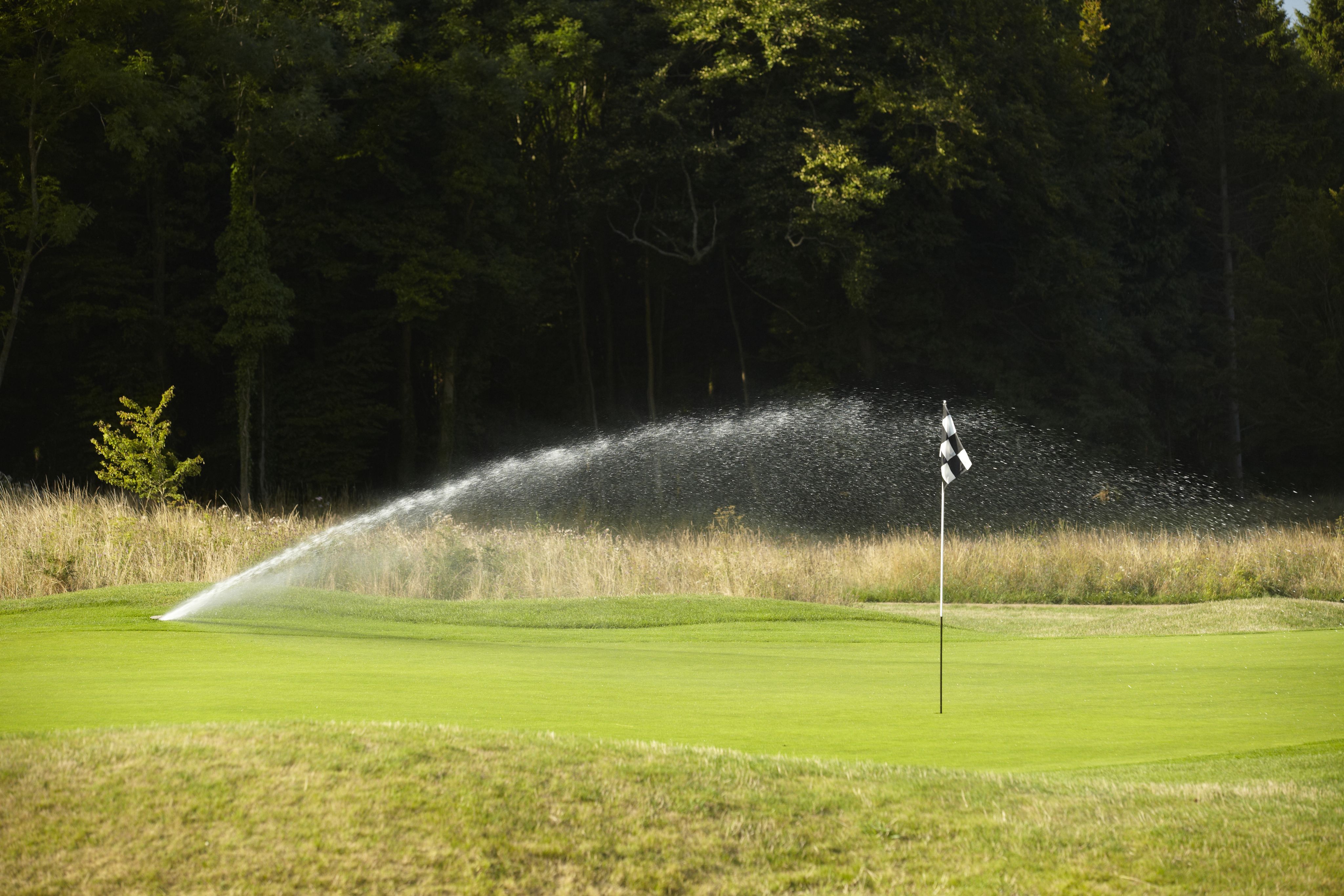
2. Technology for targeted irrigation
Targeted irrigation informed by automatically updated data can help cut water consumption significantly. In-ground sensors across golf properties can deliver instant data points on soil moisture, salinity and temperature, without the need of manual measurements. Learn how Devin Cullen at Torrey Pines is using Spiio to take a targeted approach to irrigation.

3. Native landscaping & reduced turf
Reducing the amount of irrigated turf, especially in out-of-play areas, is an important and cost-effective way of reducing consumption. Introducing native landscaping can also enhance wildlife habitat for biodiversity. Learn more.

4. Recycled water
Using waste water that has undergone tertiary treatment can be one of the most sustainable ways for golf businesses to irrigate courses. Recycled water sourced from municipalities, which is then naturally filtered through turf, offers valuable reciprocal benefits. Learn more from Arabella Golf Resort, Mallorca, Spain.

5. Water capture
On-site storage that enables surface water capture and rainwater harvesting is an efficient and sustainable way to supplement irrigation, reducing reliance on other sources and providing a buffer during droughts. Learn how a private club in Tuscany, The Club at Castiglion del Bosco, used a course restoration project to create a closed capture system to store winter rains for summer irrigation. John Clarkin from Turfgrass tells the story.
* Watch Syngenta Golf's full podcast interview with John Clarkin HERE

6. Drought resistant turfgrass
In some part of the world, changing turfgrass can help drastically cut irrigation and other inputs. At Camiral in Spain, winner of the best international course at the Golf Environment Awards 2025, agronomist Alfredo Álvarez explains how they switched grasses on The Stadium Course as part of a plan to cut water consumption by 30%.

7. Education
The USGA’s Water Conservation Playbook focuses on nine water conservation strategies in three categories:
1. Fundamental Irrigation Stewardship
Irrigation System Maintenance
The Effects of Chemical Applications on Water Use and Drought Resistance
Managing Golfer Expectations to Help Conserve Water
2. Advanced Irrigation Techniques and Conservation Strategies
Site-Specific Irrigation Scheduling
Grassing Strategies for Golf Course Water Conservation
Reducing Irrigated Acreage
Subsurface Drip Irrigation
3. Water Sourcing and Storage Stewardship
Surface Water Optimization
Using Recycled Water



